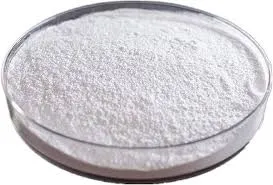
Dec . 10, 2024 23:26 Back to list
Effective Use of Latex Bonding Agents in Various Applications
Understanding Latex Bonding Agents
Latex bonding agents are essential materials in various industries, particularly in construction, woodworking, and arts and crafts. These agents are typically water-based adhesives that utilize latex, a natural or synthetic polymer, to create strong bonds between surfaces. Their versatility, ease of use, and environmental benefits make them an increasingly popular choice among professionals and hobbyists alike.
What is Latex?
Latex is a colloidal suspension of polymer microparticles in water. It can be derived from natural sources, like the rubber tree, or produced synthetically, such as Styrene-Butadiene Rubber (SBR) and Polyvinyl Acetate. Natural latex is often preferred for its biodegradable properties, while synthetic varieties offer enhanced performance characteristics. The choice between natural and synthetic latex bonding agents often depends on the specific requirements of a project or application.
Properties of Latex Bonding Agents
1. Adhesion Strength One of the most important characteristics of latex bonding agents is their ability to provide strong adhesion to various substrates, including wood, metal, ceramics, and some plastics. This makes them suitable for a wide range of applications.
2. Flexibility Unlike many traditional adhesives that become rigid once set, latex bonding agents maintain a certain level of flexibility. This is particularly advantageous in applications where materials may experience expansion and contraction due to temperature or humidity changes.
3. Water Resistance While not all latex bonding agents are waterproof, many are resistant to water, making them suitable for use in environments that are exposed to moisture. This quality is crucial in applications such as flooring installations and outdoor constructions.
4. Environmental Safety Being water-based, latex adhesives usually have lower volatile organic compound (VOC) levels compared to solvent-based adhesives. This characteristic makes them a more environmentally friendly option, emitting fewer harmful fumes during application.
latex bonding agent

5. Easy Cleanup Another benefit of latex bonding agents is that they can be easily cleaned up with water while they are still wet. This feature simplifies the application process and reduces the mess associated with adhesive use.
Applications of Latex Bonding Agents
1. Construction In the construction industry, latex bonding agents are commonly used for installing flooring, such as tiles and carpets. They are also employed in the application of wall coverings and in various masonry applications to improve adhesion between different materials.
2. Woodworking Woodworkers often utilize latex bonding agents for laminating and assembling wooden components. Their strong bonding properties and ease of use make them ideal for crafting furniture, cabinetry, and other wooden products.
3. Arts and Crafts In the realm of crafting, latex bonding agents are a staple for artists and hobbyists. They are used in collages, fabric projects, and other creative undertakings where permanent bonds are needed without the mess of traditional adhesives.
4. Automotive and Aerospace Latex bonding agents have found applications in the automotive and aerospace industries for bonding components and materials due to their lightweight properties and ability to withstand various environmental conditions.
Conclusion
Latex bonding agents are invaluable tools across numerous fields. Their combination of strong adhesion, flexibility, water resistance, environmental safety, and ease of cleanup makes them a preferred choice for various applications. Whether in construction, woodworking, or arts and crafts, these versatile adhesives continue to enhance the effectiveness and efficiency of bonding processes, providing robust solutions to meet the evolving demands of professionals and enthusiasts alike. As technology advances, the formulations of latex bonding agents will likely continue to improve, paving the way for even broader applications in the future.
-
Versatile Hpmc Uses in Different Industries
NewsJun.19,2025
-
Redispersible Powder's Role in Enhancing Durability of Construction Products
NewsJun.19,2025
-
Hydroxyethyl Cellulose Applications Driving Green Industrial Processes
NewsJun.19,2025
-
Exploring Different Redispersible Polymer Powder
NewsJun.19,2025
-
Choosing the Right Mortar Bonding Agent
NewsJun.19,2025
-
Applications and Significance of China Hpmc in Modern Industries
NewsJun.19,2025







